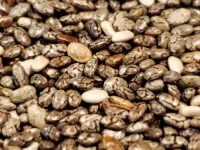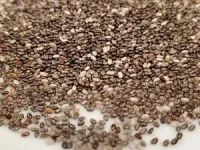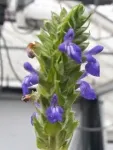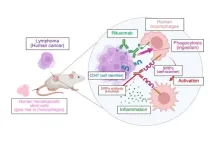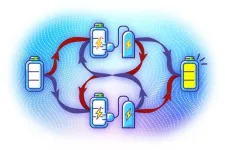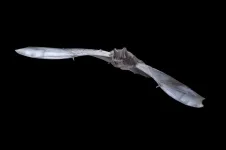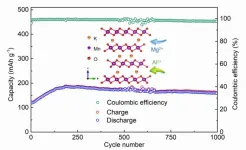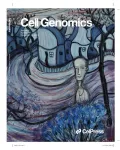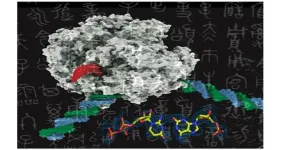(Press-News.org) CORVALLIS, Ore. – Oregon State University scientists have sequenced the chia genome and in doing so provided a blueprint for future research that capitalizes on the nutritional and human health benefits of the plant.
In the just-published paper, the researchers identified chia genes associated with improving nutrition and sought after properties for pharmaceuticals that could be used to treat everything from cancer to high blood pressure. The seeds of the chia plant have received widespread attention in recent years because of the nutritional punch they pack.
Others have sequenced the chia genome, but this paper provides a more detailed look at the molecular level and the potential of genetic data mining with a keen focus on human health applications.
“This research opens up possibilities for scientists to study chia seed through the lens of improving human health while at the same time continuing to further our knowledge of all the nutritional benefits of chia,” said Pankaj Jaiswal, a professor in the Department of Botany and Plant Pathology in the College or Agricultural Sciences at Oregon State.
The researchers are also hopeful that the findings will spur interest in growing chia in Oregon, where they say climate conditions are similar to those in the regions of South America where chia is primarily grown. Researchers at the University of Kentucky have helped spur chia seed growing in that state.
Chia is considered an orphan or minor crop that has traditionally not received attention from scientists like rice, wheat and maize, all of which contributed to last century’s Green Revolution that mitigated global hunger and saved millions of lives.
“Now we are at the point where long-term food and nutrition security requires diversifying the human diet by breeding and making genetic improvement to nutrient-rich, so-called minor crops like chia,” said Sushma Naithani, an associate professor, senior research in the Department of Botany and Plant Pathology.
In recent years, global demand for nutrient-rich so-called orphan crops such as chia, millets and yam has increased, the researchers note. Beyond their nutritional value, they are important because they can often grow on marginal land unsuitable for many traditional grain crops, an important asset in mitigating climate change.
Chia seeds – which are small, round and can be black, brown and white – are high in fiber, healthy fats, and proteins and often are part of recipes for items including smoothies, yogurt, oatmeal, pancakes and granola bars.
Past research has found:
Polyunsaturated fatty acids found in chia improve cardiovascular health and cholesterol and have anti-cancer properties.
Chia seeds’ high fiber content helps stabilize blood glucose levels in type-2 diabetes patients and aid people with gastrointestinal-tract-related diseases.
Protein in chia seeds has the potential to help treat cancer and high blood pressure and also has antioxidant, anti-inflammatory and anti-microbial properties.
Water-soaked chia seeds form a gel that acts as a texture modifier, emulsifier, gelling and encapsulating agent in food, cosmetics and pharmaceutical products.
In addition, this latest paper identifies genes and genetic markers in chia that could aid agricultural researchers in breeding the plant to amplify traits in the plant that are valuable to human health.
The researchers found 29 genes involved with biosynthesis of polyunsaturated fatty acids and 93 genes that aid the gel-forming property of chia seeds, said the first author Parul Gupta, a research associate in the Jaiswal laboratory.
They also found 2,707 genes highly expressed in the seed that are likely to generate protein-derived small bioactive peptides. When the seed protein is digested in the intestinal tract, these small biopeptides are released and absorbed in the body and have potential properties that may help alleviate human health conditions like type-2 diabetes and hypertension. This is the first report of any plant genome analysis with human health benefits.
To promote collaborations and open data science, the researchers released the chia genome data via its genome portal https://salviagdb.org.
In addition to Jaiswal, Naithani and Gupta, co-authors of the paper are researchers Justin Elser and Justin Preece; graduate students Matthew Geniza, Noor Al-Bader and Rachel Baschieri; and undergraduate students Jeremy Levi Phillips and Ebaad Haq, all of Oregon State University.
END
New study eyes nutrition-rich chia seed for potential to improve human health
2023-12-14
ELSE PRESS RELEASES FROM THIS DATE:
Were Neanderthals morning people ?
2023-12-14
A new paper in Genome Biology and Evolution, published by Oxford University Press, finds that genetic material from Neanderthal ancestors may have contributed to the propensity of some people today to be “early risers,” the sort of people who are more comfortable getting up and going to bed earlier.
All anatomically modern humans trace their origin to Africa around 300 thousand years ago, where environmental factors shaped many of their biological features. Approximately seventy-thousand years ago, the ancestors ...
Mice with humanized immune systems to test cancer immunotherapies
2023-12-14
Mice with human immune cells are a new way of testing anti-cancer drugs targeting the immune system in pre-clinical studies. Using their new model, the Kobe University research team successfully tested a new therapeutic approach that blindfolds immune cells to the body’s self-recognition system and so makes them attack tumor cells.
Cancer cells display structures on their surface that identify them as part of the self and thus prevent them from being ingested by macrophages, a type of immune cell. Cancer immunotherapy aims at disrupting these recognition systems. Previous studies showed that a substance that blinds macrophages to one of ...
Quantum batteries break causality
2023-12-14
Batteries that exploit quantum phenomena to gain, distribute and store power promise to surpass the abilities and usefulness of conventional chemical batteries in certain low-power applications. For the first time, researchers including those from the University of Tokyo take advantage of an unintuitive quantum process that disregards the conventional notion of causality to improve the performance of so-called quantum batteries, bringing this future technology a little closer to reality.
When you hear the word “quantum,” the physics governing the subatomic world, developments in ...
Mothers and children have their birthday in the same month more often than you’d think – and here’s why
2023-12-14
Do you celebrate your birthday in the same month as your mum? If so, you are not alone. The phenomenon occurs more commonly than expected – a new study of millions of families has revealed.
Siblings also tend to share month of birth with each other, as do children and fathers, the analysis of 12 years’ worth of data shows, whilst parents are also born in the same month as one another more often than would be predicted.
Previous research has found that women’s season of ...
Bats declined as Britain felled trees for colonial shipbuilding
2023-12-14
Bat numbers declined as Britain’s trees were felled for shipbuilding in the early colonial period, new research shows.
The study, by the University of Exeter and the Bat Conservation Trust (BCT), found Britain’s Western barbastelle bat populations have dropped by 99% over several hundred years.
Animals’ DNA can be analysed to discover a “signature” of the past, including periods when populations declined, leading to more inbreeding and less genetic diversity.
Scientists used this method to discover the historic decline ...
Guest pre-intercalation: an effective strategy to boost multivalent ion storage
2023-12-14
Due to the merits of low cost, low installation requirements, and high-level safety, aqueous rechargeable batteries (ARBs) offer an ideal option for dealing with future energy-demand pressure. Traditional aqueous batteries are mostly concentrated on mono-valent metal-ion, such as Li+, Na+, and K+. Compared to mono-valent carriers, multivalent cations have the capability to transfer more than one electron, and thereby to potentially provide better energy storage. To date, aqueous multivalent ion batteries based on Zn2+ have received a lot of attention. However, the investigations on aqueous ...
Unravelling the association between neonatal proteins and adult health
2023-12-14
Research led by Professor John McGrath from the University of Queensland found that the concentration of the C4 protein, an important part of the immune system, was not associated with risk of mental disorders.
However, the research also showed that a higher concentration of the C3 protein reduces the risk of schizophrenia in women, and studies based on the genetic correlates of C4 found strong links with several autoimmune disorders.
Professor John McGrath from UQ’s Queensland Brain Institute said his colleagues at Aarhus University in Denmark looked at ...
Gut bacteria of malnourished children benefit from key elements in therapeutic food
2023-12-14
A clinical trial reported in 2021 and conducted by a team of researchers from Washington University School of Medicine in St. Louis and the International Centre for Diarrhoeal Disease Research in Dhaka, Bangladesh, showed that a newly designed therapeutic food aimed at repairing malnourished children’s underdeveloped gut microbiomes was superior to a widely used standard therapeutic food.
Now, another study from the same research team at Washington University School of Medicine has identified key, naturally occurring biochemical components of this new therapeutic food and the important bacterial strains that process these ...
Gayle Benson makes historic donation for new home for Ochsner Children’s Hospital
2023-12-14
NEW ORLEANS, La. – Ochsner Health announces plans for The Gayle and Tom Benson Ochsner Children’s Hospital, made possible through a transformational gift from Mrs. Gayle Benson.
“We are proud to unveil much-anticipated plans for a new home for Louisiana’s No. 1 ranked children’s hospital,” said Pete November, CEO, Ochsner Health. “Ochsner is deeply grateful for Mrs. Benson and her unparalleled act of generosity, which will significantly impact the lives of countless families throughout Louisiana and the Gulf South. This facility will enable us to care for more children, retain and attract top pediatric physicians ...
Enzymes can’t tell artificial DNA from the real thing
2023-12-14
The genetic alphabet contains just four letters, referring to the four nucleotides, the biochemical building blocks that comprise all DNA. Scientists have long wondered whether it’s possible to add more letters to this alphabet by creating brand-new nucleotides in the lab, but the utility of this innovation depends on whether or not cells can actually recognize and use artificial nucleotides to make proteins.
Now, researchers at Skaggs School of Pharmacy and Pharmaceutical Sciences at the University of California San Diego have ...
